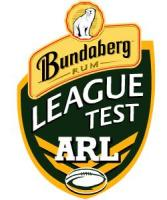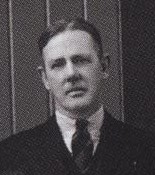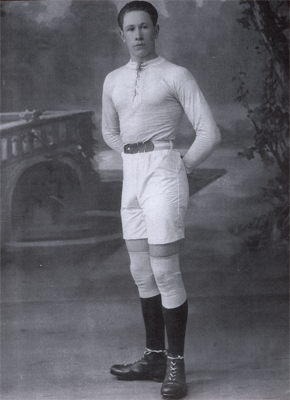The Ashes series, similar to the cricket series of the same name, was a best-of-three series of test matches between Australia and Great Britain national rugby league football teams. It had been contested 39 times from 1908 until 2003 largely with hosting rights alternating between the two countries. Since 1973, Australia has won a record thirteen consecutive Ashes series.

The history of rugby league as a separate form of rugby football goes back to 1895 in Huddersfield, West Riding of Yorkshire when the Northern Rugby Football Union broke away from England's established Rugby Football Union to administer its own separate competition. Similar schisms occurred later in Australia and New Zealand in 1907. Gradually the rugby played in these breakaway competitions evolved into a distinctly separate sport that took its name from the professional leagues that administered it. Rugby league in England went on to set attendance and player payment records and rugby league in Australia became the most watched sport on television. The game also developed a significant place in the culture of France, New Zealand and several other Pacific Island nations, such as Papua New Guinea, where it has become the national sport.

The Great Britain national rugby league team represents Great Britain in rugby league. Administered by the Rugby Football League (RFL), the team is nicknamed The Lions.
The Australian national rugby league team, the Kangaroos, have represented Australia in senior men's rugby league football competitions since the establishment of the game in Australia in 1908. Administered by the Australian Rugby League Commission, the Kangaroos are ranked first in the IRL Men's World Rankings. The team is the most successful in Rugby League World Cup history, having won the competition 12 times, and contested 15 of the 16 finals, only failing to reach the final in the 1954 inaugural tournament. Only five nations have beaten Australia in test matches, and Australia has an overall win percentage of 69%.

The France national rugby league team represents France in international rugby league matches. They are referred to as les Chanticleers or less commonly as les Tricolores. The team is run under the auspices of the Fédération Française de Rugby à XIII.

Albert (Bert) Henry Baskerville was a Wellington, New Zealand, postal clerk, a rugby union forward, author of the book Modern Rugby Football: New Zealand Methods; Points for the Beginner, the Player, the Spectator and a pioneer of rugby league.

Herbert Henry Messenger, nicknamed "Dally" and sometimes "The Master" was one of Australasia's first professional rugby footballers, recognised as one of the greatest-ever players in either code. He played for New South Wales in the first match run by the newly created New South Wales Rugby Football League, which had just split away from the established New South Wales Rugby Football Union.

The Anzac Test is an annual rugby league football test match played between Australia and New Zealand for the Bill Kelly Memorial Trophy.
Terry Hill was an Australian professional rugby league footballer who played as a centre in the 1990s and 2000s. He played in the NRL for the South Sydney Rabbitohs, Eastern Suburbs, Western Suburbs Magpies, Manly-Warringah Sea Eagles and the Wests Tigers as well as representative football for New South Wales and Australia. He was also well known for his promotional television work with Lowes Menswear.

William Martin Kelly (1892–1975), born in Westport, New Zealand was a rugby league football identity who enjoyed success in New Zealand and Australia as both a player and coach in the first half of the 20th century. He played for Wellington, the Balmain Tigers, New South Wales and for both the New Zealand and Australian national sides. He also had a long coaching career with five different clubs in the NSWRFL in the 1920s, 1930s and 1940s, and with New Zealand in 1932.

John (Johnny) Graves was an Australian rugby league footballer who played in the 1940s and 1950s. An Australian international representative goal-kicking wing, he played his club football for the South Sydney Rabbitohs, with whom he won back-to-back premierships in 1950–51.

Jean Galia was a French rugby union and rugby league footballer and champion boxer. He is credited with establishing the sport of rugby league in France in 1934, where it is known as rugby à treize.
Richard Huddart was an English professional rugby league footballer who played in the 1950s, 1960s and 1970s. A Great Britain and England international representative forward, he played at club level in England for Whitehaven and St Helens, and in Australia for St. George. Huddart was both a Whitehaven and St Helens R.F.C. Hall of Fame inductee.

The 1910 Great Britain Lions tour of Australia and New Zealand was the first international tour of the Great Britain national rugby league team, "The Lions". They played the second ever Ashes series against Australia, and their first as the visiting team, before travelling to Auckland to take on New Zealand. The tour was a huge promotional and financial success for what was then known as the "Northern Union" game and helped set the pattern for regular, alternating test match series between Britain and Australia. It is regarded as one of the most important events in the history of rugby league.
The 1932 Great Britain Lions tour was a tour by the Great Britain national rugby league team) of Australia and New Zealand which took place between May and August 1932. The tour involved a schedule of 26 games, 18 in Australia including a three-test series against Australia for the Ashes and a further eight in New Zealand including a three-test series against New Zealand.
The 1936 Great Britain Lions tour was a tour by the Great Britain national rugby league team of Australia and New Zealand which took place between May and August 1936. The tour involved a schedule of 24 games, 16 in Australia including a three-test series against Australia for the Ashes and a further 8 in New Zealand including a two-test series against New Zealand.
The 1946 Great Britain Lions tour was a tour by the Great Britain national rugby league team of Australia and New Zealand which took place between April and August 1946. The tour involved a schedule of 27 games: 20 in Australia including a three-test series against Australia for the Ashes, and a further 7 in New Zealand including one test match against New Zealand.
This page list all the four squads which took part to the 1957 Rugby League World Cup.
The 1950 Great Britain Lions tour was a tour by the Great Britain national rugby league team of Australia and New Zealand which took place between May and August 1950. The tour involved a schedule of 25 games: 19 in Australia including a three-test series against Australia for the Ashes, and a further 6 in New Zealand including two test matches against New Zealand. A scheduled fixture in Forbes, New South Wales, against a Western Districts team, was abandoned when the chartered plane could not land due to bad weather. Captained by Ernest Ward, the Lions returned home having won 19 and lost 6 of their games. The team won the first test match of the tour but lost the second and third to lose the Ashes Test series to Australia. The team also lost both Test Matches in and against New Zealand. Despite being a British team – five of the squad were Welsh – the team played, and were often referred to by both the press at home and away, as England.
The 1956–57 Kangaroo tour was the ninth Kangaroo tour, in which the Australian national rugby league team travelled to Great Britain and France and played twenty-eight matches, including the Ashes series of three Test matches against Great Britain and three Test matches against the French. It followed the tour of 1952-53 and the next was staged in 1959-60.









